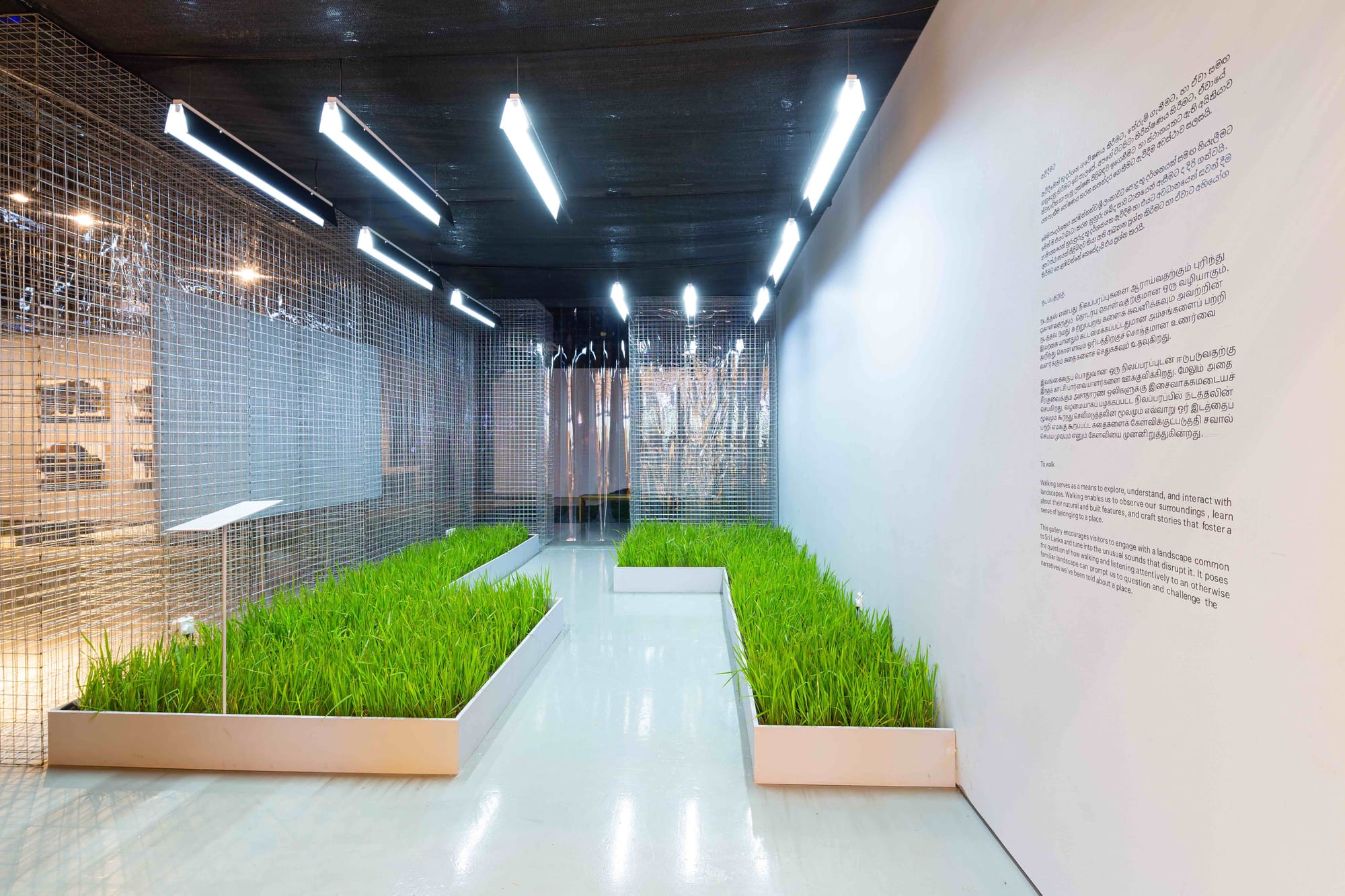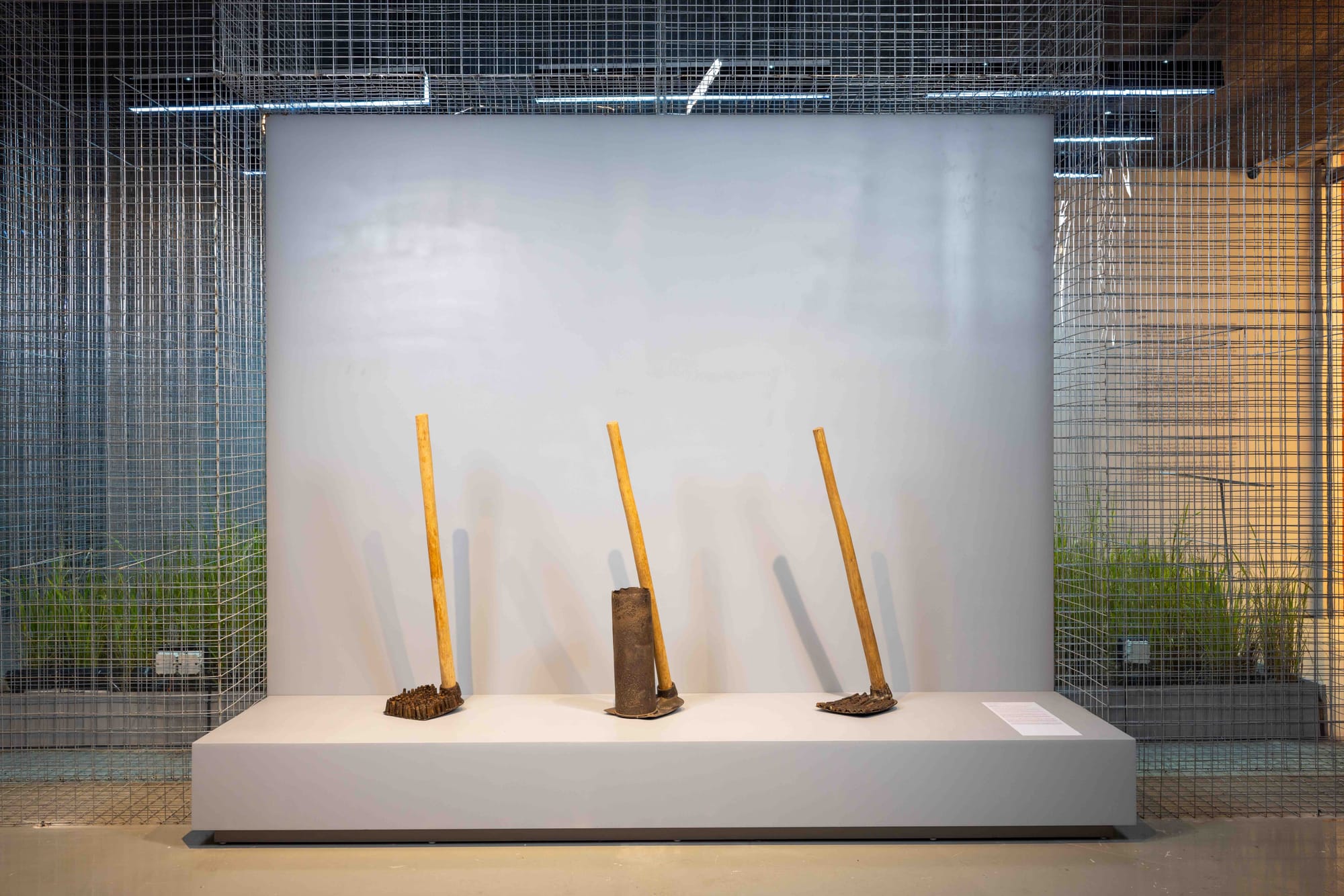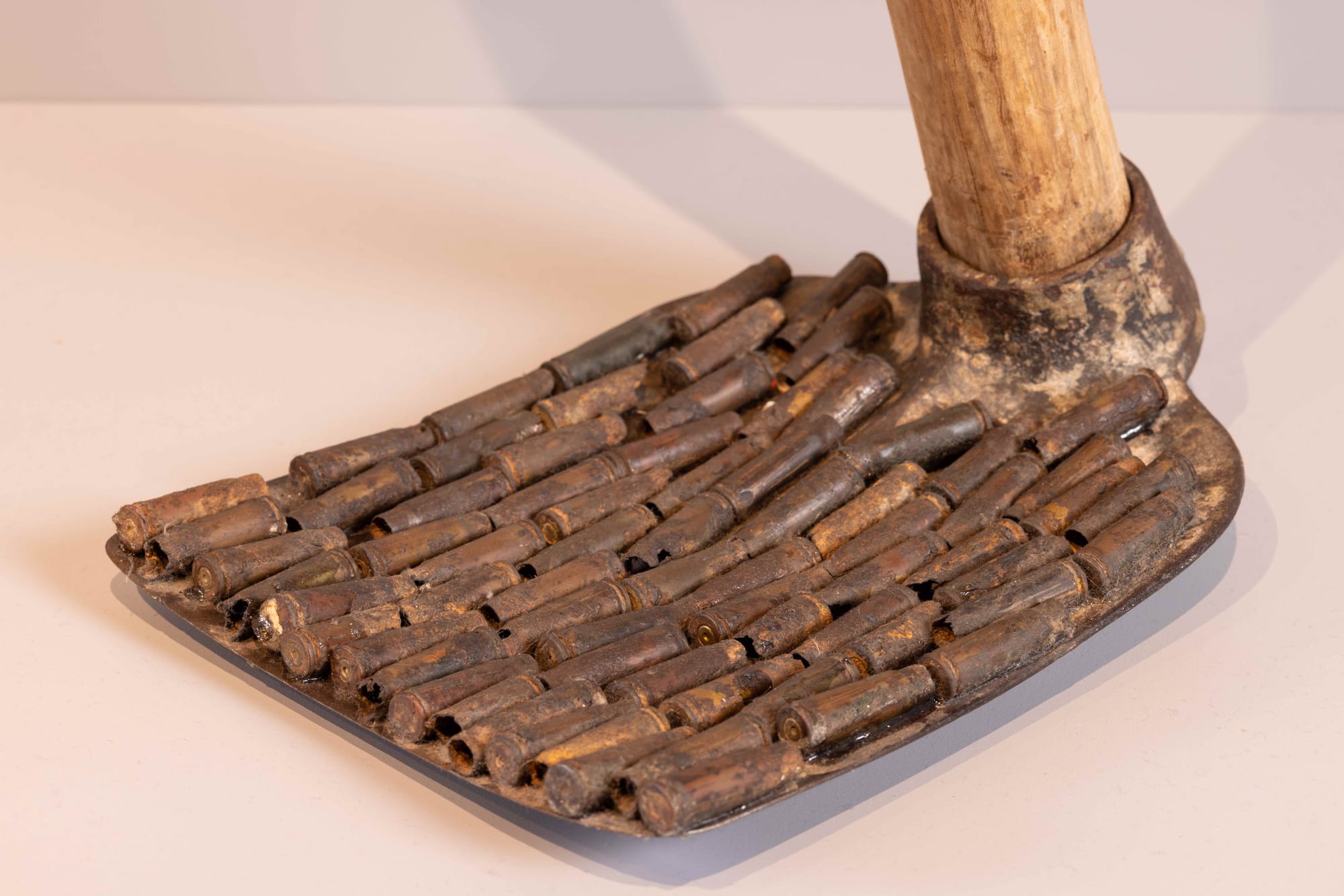Shows
“Total Landscaping” at the Museum of Modern and Contemporary Art Sri Lanka

Total Landscaping
Museum of Modern and Contemporary Art Sri Lanka (MMCA)
Colombo
Sep 12, 2024–May 29, 2025
It’s hot in Colombo and the air is weighed down by a ripening monsoon. The Crescat Boulevard Shopping Centre is one of the few places in town offering respite from the equatorial endurance test outside. Situated between the Indian Ocean and the Beira Lake, this commercial complex is also home to the Museum of Modern and Contemporary Art Sri Lanka (MMCA). Now in its sixth year of operation, the MMCA is the first of its kind here; a free, publicly accessible modern and contemporary art institution solely dedicated to Sri Lankan visual culture from the 20th and 21st century. Recently, the museum completed a major 8-month-long exhibition titled “Total Landscaping,” skilfully produced by senior curator Sandev Handy and assistant curator Thinal Sajeewa. Featuring 29 interdisciplinary artists connected to Sri Lanka and three distinct show rotations, this ambitious cultural offering examined the contentious role that land disputes have played in shaping Sri Lanka's recent history.
Visitors entering the gallery were greeted by a thriving, temporary “paddy field.” This living, durational piece by Negombo-based multidisciplinary artist Danushka Marasinghe, titled Walk(er) (2016), demarcated the threshold between commercial space and cultural sandbox, and was the only artwork installed for the entire exhibition period. The paddy immersed audiences in a pungent, grassy aroma as it matured, offering a stark reminder of the intense weather conditions awaiting outside. The space was filled with field-recorded cricket song intermittently punctuated by a troubling, nameless noise—inviting a tightening of the throat, a dryness in the mouth. First exhibited in 2016 at the Colombo Art Biennale, this work emerged during a rare window of calm in Sri Lanka’s recent history; a time when the civil conflict was almost a decade in the past, and just before Covid-19 and economic collapse plunged the country back into collective hardship. Marasinghe’s installation evokes the disease germinating in the soil, awaiting its break through the undergrowth—a visceral example of the sensitivity that we so often rely on artists for, and the deep listening that it encourages.

To the left of Marasinghe’s paddy, in a discreet alcove behind a makeshift wall, were three unassuming mammoties. These weathered farming hoes—which are unique to India and Sri Lanka—stood uniform and forward-leaning, reminiscent of Duchampian readymades. Mammoty is a Tamil word that translates to “sand-cutter.” However, instead of sand, each hoe base was weighed down by dozens of ragged, empty bullet casings and ammunition shells. Motherland II, III, IV (2015), by Kilinochchi-based sculptor M. Vijitharan, is a literal archaeological dig repositioned inside the gallery space. During the civil war, Vijitharan and his family were displaced from their ancestral homeland in the northern Sri Lanka where they had farmed for generations. After decades of exile, he returned and attempted to revive his family’s paddy field. In doing so, he discovered the persistent presence of exploded bullets and ammunition embedded deep within the earth, rendering much of the site infertile. Layer after layer he dug, each time dredging up more remnants of war. His work transformed the act of digging from cultivation into excavation, reminding us of the land’s capacity to store memory, and at times conceal horrors.


At the core of this exhibition was a recognition that nearly all major disputes in Sri Lanka’s history have been fundamentally about land—questions of ownership, rights, residence, identity, and belonging. MMCA's engagement with this difficult subject matter demonstrated the museum's commitment to fostering truthful cultural dialogue, and affirmed that open conversation is critical to peacebuilding efforts; understanding is the foundation of tolerance. Furthermore, “Total Landscaping” was presented in partnership with Supporting Effective Dispute Resolution (SEDR) under its Arts for Alternative Dispute Resolution (Arts4ADR) initiative—a 12-month pilot program which trained cultural practitioners in arts-led conflict mediation and commissioned new community-engaged artworks.
While it considered specifically Sri Lankan concerns, the exhibition’s approach to cultural mediation and conflict resolution offered valuable insights for other regions navigating difficult histories—particularly communities still reckoning with the troubling legacy of colonialism. With “Total Landscaping,” MMCA demonstrated how contemporary art can act as a compelling tool for reconciliation in a post-conflict society, and how arts-based interventions can help mediate and address the root causes of longstanding land-based disputes in Sri Lanka.
Julia S. Green is a visual artist, arts writer, and arts professional from Meanjin/Brisbane.







